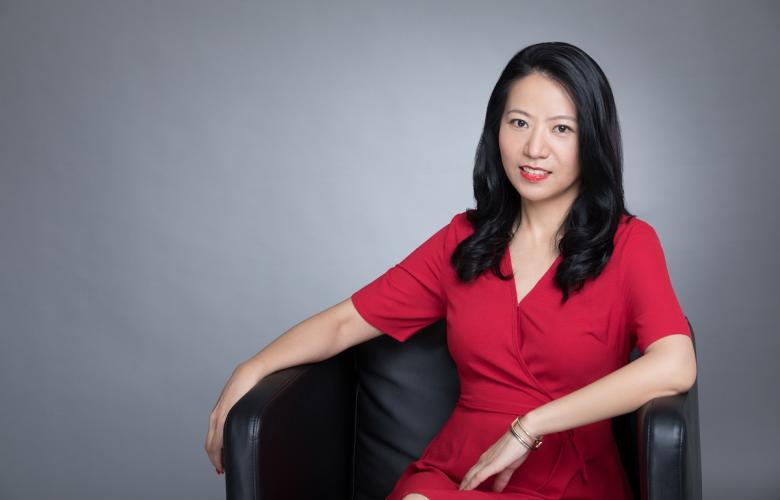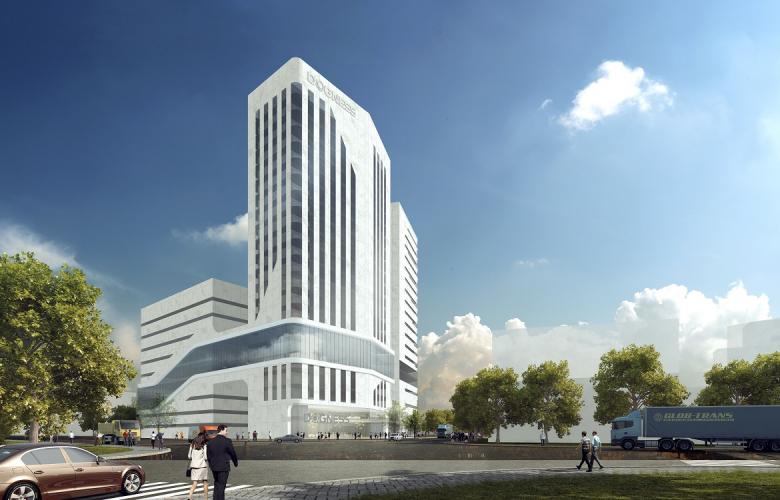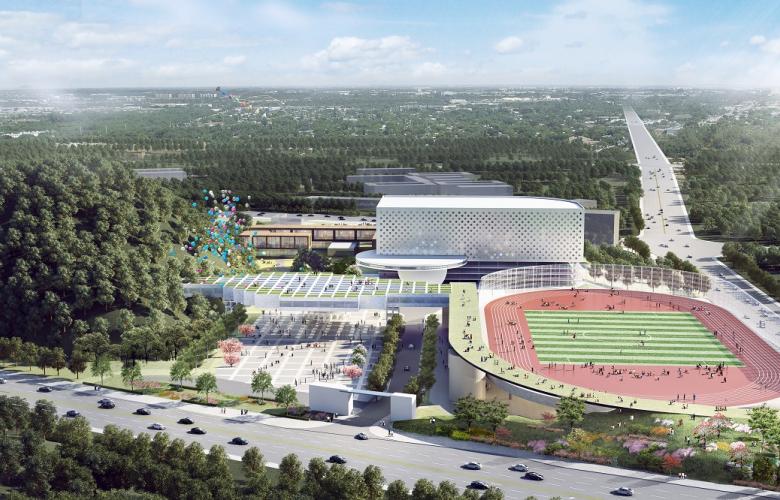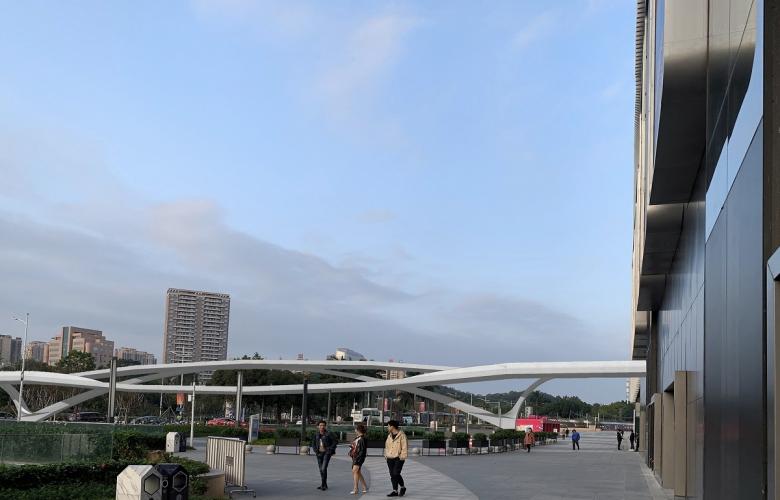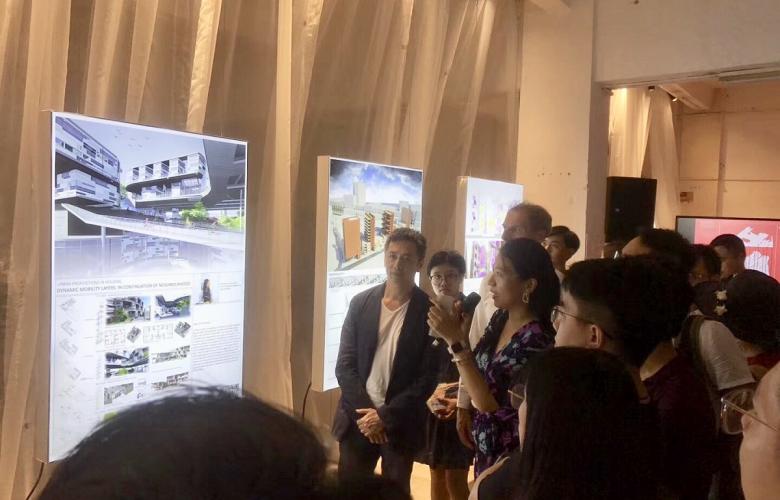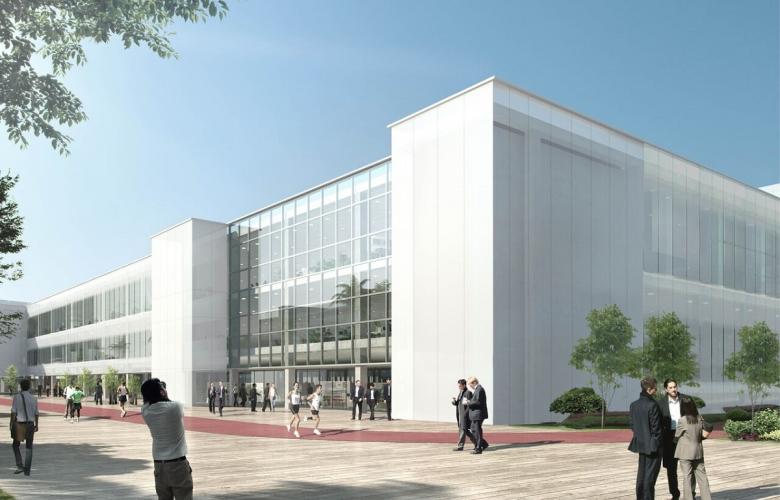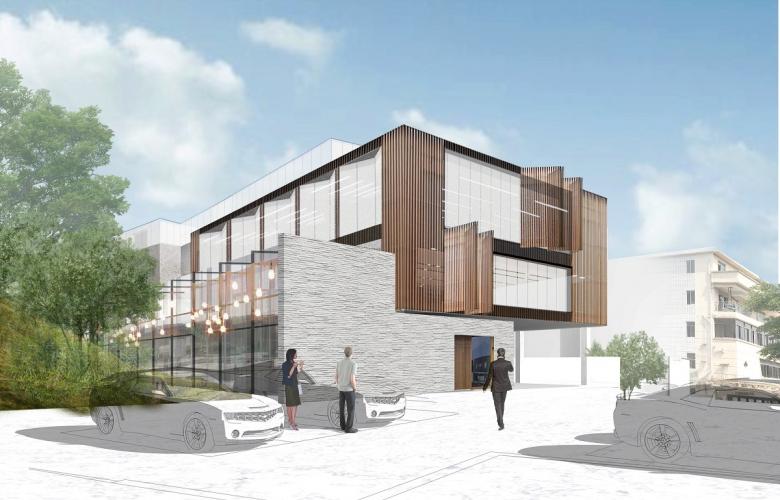Get to know Casey Wang co-founder of multidisciplinary design practice, BLEND
Contact
Get to know Casey Wang co-founder of multidisciplinary design practice, BLEND
WILLIAMS MEDIA speaks with BLEND's co-founder Casey Wang about her experiences in Architecture in Asia.
Casey Wang is the co-founder of multidisciplinary design practice, BLEND. She received a Bachelor of Science in Architecture from National Cheng Kung University and a Master of Architecture in Urban Design from the Harvard University Graduate School of Design (GSD).
WILLIAMS MEDIA spoke with Casey about her journey and Architectural experiences in Asia.
Can you tell us about your past experience working at international architectural practices? How has the experience shaped BLEND?
I was first trained as an architect in Taiwan. I practiced in Shanghai for a couple of years for golf resorts and residential development. I then went on to study urban design at the Harvard University Graduate School of Design (GSD) in 2005. While I was at the GSD, I started to work on urban and architectural projects in Boston and Detroit. I also engaged with urban design in Almere in the Netherlands, as well as the transformation of the Tsinghua University Campus in Beijing. New opportunities came up as I gained more international experience. In 2006, I joined J. Mayer H. Architecture Design and Research in Berlin and became a key member in the design and construction of the Metropol Parasol Seville project in Spain. I was in London with Foster + Partners between 2007 and 2009, and worked on projects including the Robert Gorden University in Aberdeen, the Birmingham Library, the Esentai residential complex in Kazakhstan, and the Yale School of Management.
In late 2009, OMA established its Hong Kong office, and I came back to Asia. I worked closely with OMA’s Asia and Rotterdam teams and Rem Koolhaas to complete the design of the Taipei Performing Arts Center, the Shenzhen Qianhai Port City, and the Tencent Beijing Headquarters. In 2013, I joined Gensler as a project manager and led projects in Zhuhai and Guangzhou in China, as well as other developments across Malaysia, Vietnam, and Australia. Finally, in 2015, I decided to set up my own practice BLEND.
It has been both challenging and rewarding working on urban and architectural projects of different scales and across different places. I have met many talented planners and architects. Many of them have now become part of BLEND’s team or collaborators. The experience of working in different regions has given us both the confidence and expertise to take on projects at different locations. We are an agile team and welcome projects with various degrees of complexity.
What is unique about working in Asia?
There are many new opportunities in Asia, as the region is still in a phase of relatively rapid development and transformation. Our office has new urban planning and architectural design projects, and also a number of renewal and transformation projects. Each project is distinctive, and each region has its unique political climate and social needs. For us, listening to the needs of our clients and addressing the concerns of the stakeholders is essential. I believe that in order to successfully deliver projects in Asia, it is very important that architects serve as a mediator to ensure seamless communications between different parties at all stages of design and construction. The trust established between the client, the designer, and the public lays the foundation for a project beneficial to most.
What are the most important projects of BLEND so far?
One of our earliest projects is Innovation Valley No. 1 in Dongguan, China, commissioned in 2018. It is an adaptive reuse project. We converted a dilapidated factory into an office space for creative and technologies companies. It has minimalist aesthetics and accommodates a variety of usage. The austerity of the interior evokes the building’s original industrial aura. The project is representative of our strong portfolio of projects created in response to specific historical contexts and needs of contemporary users. In this project, we worked closely with the Dongguan government, and it has helped us further reinforce our method of work that focuses on establishing trust. The mutual trust we established with the city of Dongguan has brought us many opportunities. We have worked on other adaptive reuse projects such as Innovation Valley No.3, and masterplanning projects such as the Dongguan Civic Center planning.
Another recent and important project for us is the Dogness Headquarters Campus in Dongguan, commissioned in 2018. It is a design and manufacturing hub for Smart Pet Ecosystem products. It represents a novel type of architecture. Typically, office space and manufacturing plants of a company are separated. However, Dogness Headquarters Campus connects industrial and commercial functions into a singular and holistic complex, and it offers a desirable work environment shared by people with different roles in a company.
A number of BLEND’s projects involve adaptive reuse of existing structures. Can you tell us your views about architectural conservation?
Conservation is not only about keeping physical artefacts. It is more about understanding both the historical significance of a site and its buildings, as well as the contemporary needs. This understanding would allow the client and the architect to work together to identify the most appropriate opportunities to instill a project with vitality.
What are BLEND’s upcoming projects?
Most of our projects in Dongguan are currently under construction. We have recently been commissioned the planning of the new Dongguan Civic Center. The Dongguan government plans to transform the convention center into a transportation hub. We have thus designed a masterplan based on the transit-oriented planning model. It is driven not only by the updated program needs, but also the site’s relationship to the city’s transportation network. Roads for vehicles connected to the site are upgraded to make the civic center more accessible. Underground pedestrian passages and footbridges are also incorporated to offer users commuting to and from the civic center a more pleasant experience. We have the vision that the upgraded Dongguan Civic Center will become an urban catalyst that will revitalize its surroundings.
We have also done a feasibility study for the Dong Chen Huangqi Mountain Sports and Cultural Park Transformation. The Dongguan government plans to establish a civic and commercial axis in the city by 2030, and this led to the need to renovate the sports park, which is close to the axis. We designed a new park that accommodates a range of indoor and outdoor sports activities, while offering new recreational programs, including library, theatre, retail, and food and beverage. A water landscape park further enriches the site as a public leisure space. We placed the old and new programs on site to form different themed zones, and connected them by strategically planned boulevards and circulation routes that will bring in new users. The renovated sports and cultural park will be cohesive and lively, supporting future developments around the civic and commercial axis
We hope that both planning projects would lead to new development opportunities in Dongguan.
What are the emerging markets in Asia that you would like to work in?
We would like to work in South East Asia. There are a lot of interesting opportunities in the region, and we are keen to take on unique challenges. Our extensive experience of working in mainland China and dealing with its complex political climate and social needs will help us operate in these countries in South East Asia.
We are also interested in small scale building projects in Europe as we have many collaborators in the region.
You and your collaborators at BLEND have close connections with academia. How does connection with academia shape BLEND’s method of work?
I have been teaching since 2010 at universities in Hong Kong. I am currently an Adjunct Assistant Professor at The Chinese University of Hong Kong and teach both architecture and urban planning. I have also lectured at institutes and events in Hong Kong, mainland China, Taiwan, Germany, and other institutes in Asia Region. Teaching has been inspiring and rewarding experience both for myself and our practice. I have always believed that architectural practice and academia should inform each other. At BLEND we hire young practitioners to bring in novel ideas. At the same time, we also welcome them to bring questions that they have when they practiced back to academia, to further inform the production of architectural knowledge.
Getting involved in exhibitions also allows us to communicate new ideas in our discipline to the general public. In 2018, I curated the Urban Proposition in Housing for Dongguan exhibition with Nicola Ricciardi. We showcased projects that examine opportunities for transformation of industrial compounds in Dongguan into housing by students from Hong Kong, mainland China, Spain, and America. This is a good example that shows how exchange between practice, academia, and the public can contribute new ideas relevant to both the discipline and society.
For more information about BLENDs projects or to get in touch email BLEND co-founder, Casey Wang via the contact details below.
Similar to this:
Best Architecture of the year: KIA Awarded in Seoul
Construction of green mixed-use development begins in Phnom Penh
